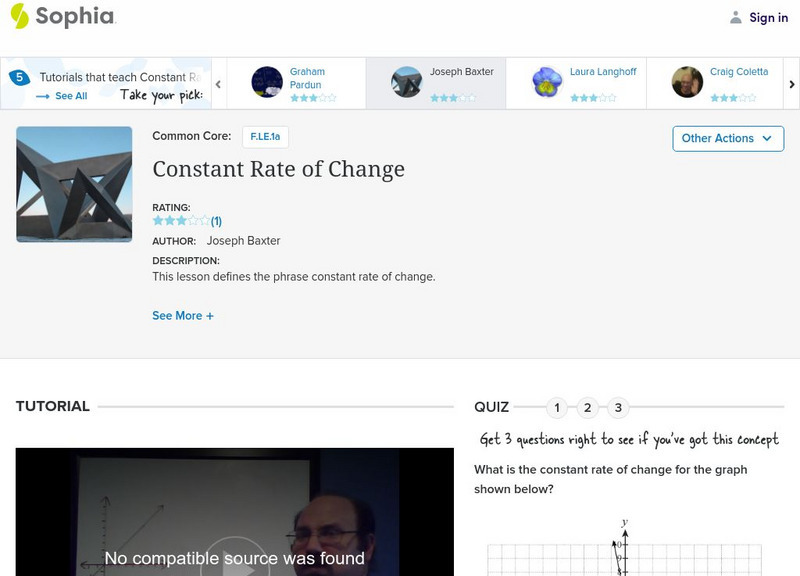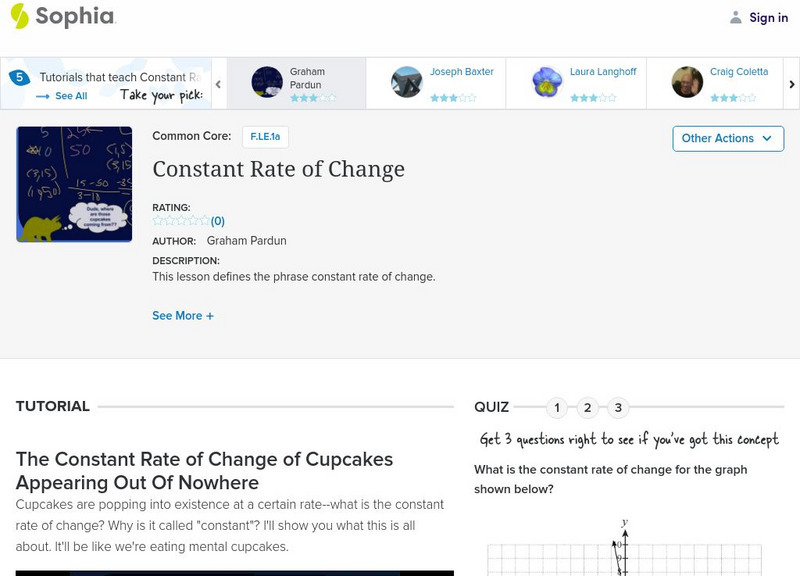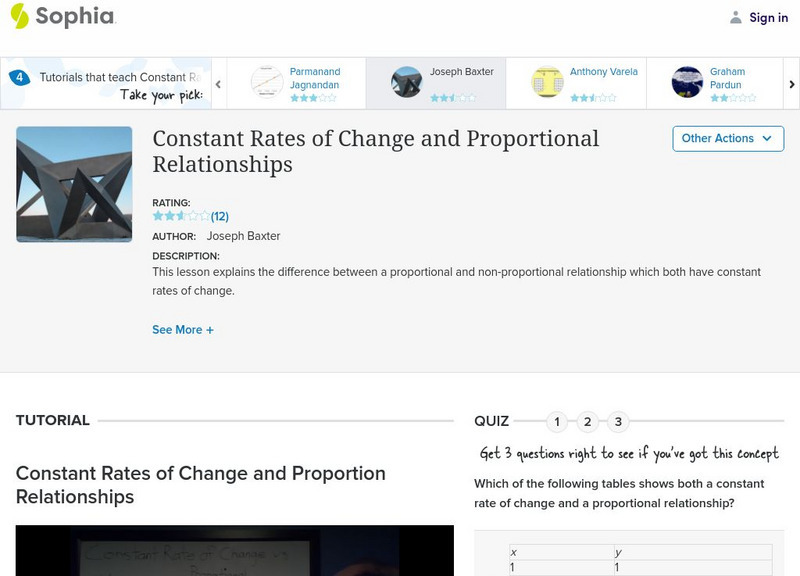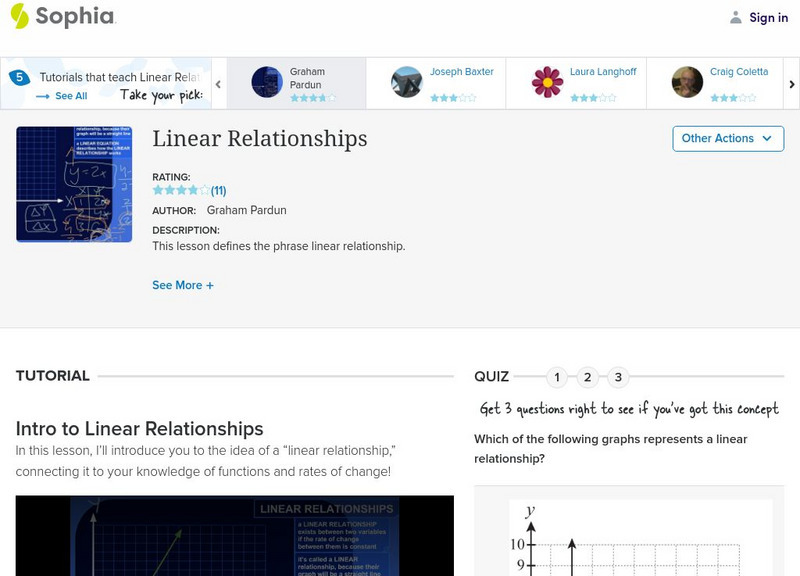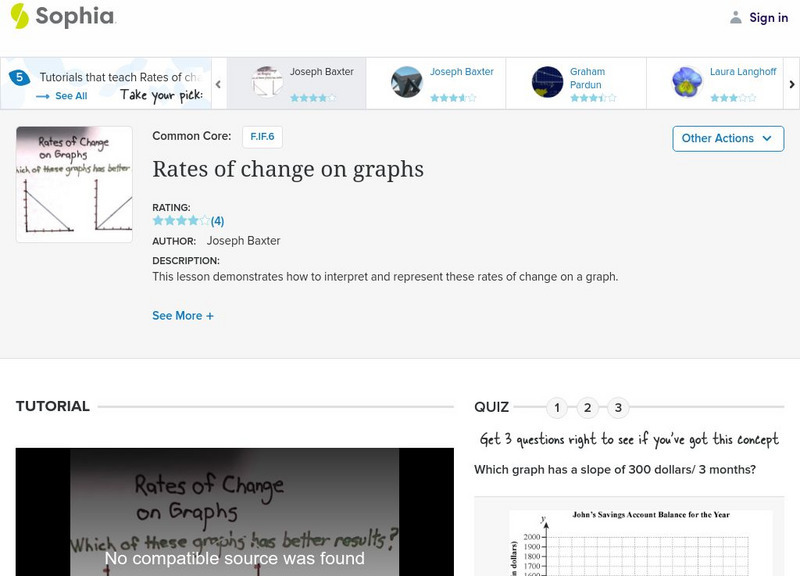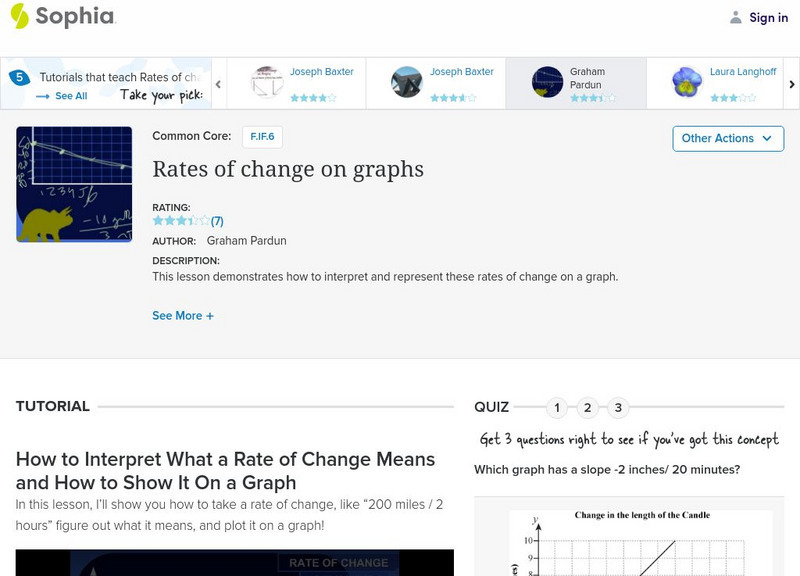Hi, what do you want to do?
Khan Academy
Khan Academy: Slope: Average Rate of Change Example 3
This video demonstrate how to find the average rate of change from a given interval of a table of values.
Khan Academy
Khan Academy: Rates of Change: Related Rates of Water Pouring Into Cone
A video presentation about volume and related rate.
Khan Academy
Khan Academy: Intro to Hyperbolic Trigonometric Functions
Exploring a motivation for even defining hyperbolic sine and cosine
Sophia Learning
Sophia: Constant Rate of Change
Explore and define a constant rate of change with linear functions. Complete assessment to check understanding.
Sophia Learning
Sophia: Constant Rate of Change
The concept of constant rate of change is described in this video tutorial. The lesson demonstrates how to determine the rate of change from a table and create a graph. Includes short quiz. [4:02]
Sophia Learning
Sophia: Constant Rate of Change
Find the rate of change in a linear equation to determine the linear relationship and to determine if the change is constant. Assess learning with a quiz.
Sophia Learning
Sophia: Constant Rates of Change and Proportional Relationships
This video lesson provides examples of tables with proportional and non-proproptional relationships but have a constant rate of change.
Sophia Learning
Sophia: Finding Rates of Change From Tabular Data
Use a formula to determine the rate of change for a given table of data.
Sophia Learning
Sophia: Finding Rates of Change From Tabular Data
Using a set of data organized in a table, determine the rate of change.
Sophia Learning
Sophia: Graphs of Constant Rates of Change
Compare two lines to determine which one is a constant rate of change.
Sophia Learning
Sophia: Linear Relationships
Determine the linear relationship of equations by comparing the rate of change. Assess learning with a quiz.
Sophia Learning
Sophia: Rates of Change on Graphs
Explore how to interpret and graph rates of change. Assess learning with a quiz.
Sophia Learning
Sophia: Rates of Change on Graphs
Understand rate of change and how it is interpreted and represented on a graph. Assess learning with a quiz.
Sophia Learning
Sophia: Slope and Constant Rate of Change
Explore the relationship between slope and the constant rate of change for linear functions. Assess learning with a quiz. [3:42]
Sophia Learning
Sophia: Applications of Function Notation
Explore how relationships such as distance and time, velocity and time, etc. can be expressed with function notation. Assess learning with a quiz. [1:52]
Sophia Learning
Sophia: Applications of Rates of Change
Examples of real world applications to demonstrate positive and negative rates of change.
Sophia Learning
Sophia: Applications of Rates of Change
Determine the rate of change and whether the change is positive, negative or zero.
Sophia Learning
Sophia: Algebra I: Average Rate of Change
This video lesson introduces and demonstrates how to find the average rate of change for a function. Students can check their understanding with an assessment. [11:31]
Sophia Learning
Sophia: Average Rate of Change
Determine the average rate of change of a curved line. Assess learning with a quiz.
Khan Academy
Khan Academy: Algebra Ii: Difference of Functions
Video on finding the difference of two square root functions. [3:08]
Virtual Nerd
Virtual Nerd:how Can You Tell if a Function Is Linear or Nonlinear From a Graph?
Watch this tutorial to discover how to tell if a function is linear or nonlinear from a graph. [3:34]
Khan Academy
Khan Academy: Algebra: Recognizing Linear Functions
This video demonstrates how to determine if a function is linear or not based on a table of x and y values. It also demonstrates how to graph the values in order to check if the function is linear or not. [4:01]
Khan Academy
Khan Academy: Direct and Inverse Variation: Inverse Variation Application
Aplication problem related to stringed instruments by first finding the constant of proportionality and then using it to find another value.
Khan Academy
Khan Academy: Logarithmic Functions: Logarithmic Scale
Understanding how logarithmic scale is different from linear scale and why it could be useful








